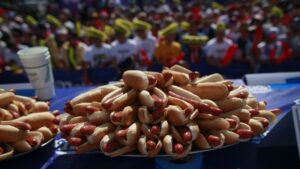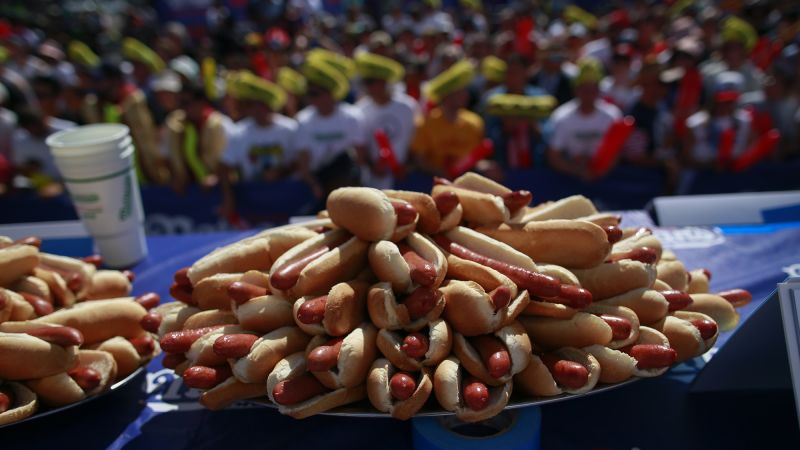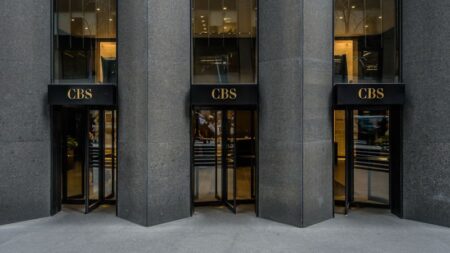Every year on the Fourth of July, a unique American tradition unfolds: the Nathan’s Famous hot dog eating competition. This event attracts thousands of spectators and millions of viewers on television, uniting families and friends in a spirited celebration of patriotism and culinary prowess. Jacqueline Lewis, who has participated in this tradition since she was 15, captures the essence of this spectacle. “I think people want to know how many hot dogs a human can eat in that amount of time,” she remarked during an interview at Coney Island, indicating the nation’s collective curiosity about competitive eating.
The Nathan’s hot dog eating contest garners immense popularity, drawing close to two million viewers on ESPN. Those lucky enough to attend in person flock to Coney Island, Brooklyn, to witness the spectacle firsthand. Participants, including seasoned competitive eaters, dedicate months to physically preparing for the grueling challenge of devouring large quantities of food within a mere ten-minute window. The anticipation builds each year to see how many franks champions can consume, with Joey Chestnut—who holds an impressive record—set to return after a brief hiatus due to commercial conflicts.
Joey Chestnut, a dominant force in competitive eating, is often remembered for showcasing extraordinary feats of food consumption, including a world record of 76 hot dogs in just ten minutes. His return to the contest not only rekindles excitement but also represents a continuation of his legacy within this exuberant American pastime. Founded on the platform of vibrancy, the Nathan’s competition reflects a broader cultural fascination with excess, illustrating America’s propensity for opulent displays.
Eating contests are a practice steeped in history, with records indicating their existence since ancient times. The allure of speed and volume in food consumption can be traced back through myths and literature, from Greek legends to the early American folklore noted by historians. By the 18th century, competitive eating had taken root in the U.S., with events such as pie eating becoming staple features of Fourth of July celebrations. Over the ensuing decades, these competitions evolved in character and purpose, from lighthearted contests of community fun to intense showdowns of endurance.
The 19th century particularly saw the emergence of two main types of contests: speed eating, where competitors are timed, and untimed events focused on who could eat the most overall. These competitions featured simpler, unbranded foods, such as onions and watermelons, and were often seen as lighthearted community activities.
The Nathan’s hot dog event as we know it began in the 1970s, ignited through a marketing initiative by PR professionals Max Rosey and Mortimer Matz. Initially, the event had a more casual, local atmosphere, attracting local Long Islanders eager to showcase their eating skills at Fourth of July barbecues. The first official contest in 1972 marked a pivotal moment, with Melody Andorfer winning by consuming 12 hot dogs in five minutes—setting the stage for the competitive eating phenomenon we recognize today.
As the decades progressed, the Shea brothers—George and Richard—transformed Nathan’s contest into a highly anticipated national event. George Shea’s role as host, complete with theatrical flair and grandiose proclamations, turned the competition into a spectacle akin to sporting events, drawing massive media attention. His strategy to promote the competition culminated in landmark partnerships with broadcasters, elevating the profile of competitive eating across America.
Well into the 21st century, competitive eating, particularly the Nathan’s contest, continues to encapsulate elements of both celebration and examination of American identity. While onlookers revel in the exuberance of the spectacle, they simultaneously confront deeper cultural narratives surrounding excess and consumption. Behavioral analysts note that the contest offers a rare moment of audacity where societal norms regarding food are playfully disregarded.
However, it’s not without its criticisms. Takeru Kobayashi, a remarkable competitor from Japan, shares concerns about the long-term effects of competitive eating on one’s health, revealing vulnerabilities beneath the celebrated triumphs. The juxtaposition of joy and caution reflects broader themes resonating within American culture: the dichotomy between indulgence and moderation.
Ultimately, the Nathan’s hot dog eating competition stands as a vibrant representation of American spirit, intertwining themes of community, sport, and celebration. It invites both spectators and participants alike to engage with the complexities of contemporary American life through the lens of a seemingly simple competition. The anticipation of watching skilled eaters navigate plates of hot dogs transcends mere entertainment, encapsulating notions of patriotism, summer joy, and the unifying bond of food. As people gather to witness this annual event, it remains a poignant reminder of how deeply food and community are interwoven into the fabric of American tradition.











